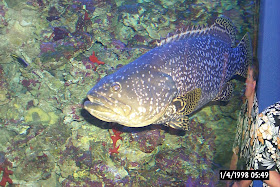
Macrine and I have visited this historic site a couple of times when we had visitors from the Philippines when we were still residing in Maryland (1990-2002). This is a must see place for history enthusiasts and students. It is only about 75 minutes drive from our residence in Colesville, MD. The drive from Colesvilles, Maryland to Gettysburg, Pennsylvania is very scenic with rural farms along the local highway.
Gettysburg Battlefield was the site of the Battle of Gettysburg, fought July 1–3, 1863, in and around the borough of Gettysburg, Pennsylvania, the county seat of Adams County, which had approximately 2,400 residents at the time. It is now the site of two Federally owned and administered areas: Gettysburg National Military Park and the Gettysburg National Cemetery. The Gettysburg Battlefield Historic District partially overlaps and partially protects other privately held properties.
Gettysburg, home to the Battle of Gettysburg (1863) of the American Civil War, draws in large numbers of tourists every year to visit the historical sites around the small community as well as the battlefield itself. Gettysburg has many activities and tours to offer to vacationers and tourists that are interested in the Gettysburg area and the history of the community and the battle. A narrated tour via double-Decker bus and tours of the Jenny Wade house are two examples. Ghost tours are also popular with tourists, profiling various locations reported to be haunted. One of the most popular times to visit Gettysburg is in the Summer and early Fall months, about June through October.
A popular attraction in Gettysburg is the reenactment of the Battle of Gettysburg which is held every summer for the three days around the Fourth of July. Events include tours, ghost stories and reenactments.
The Dobbin House Tavern, which is one of the most famous restaurants in Gettysburg, was once home to Reverend Alexander Dobbin in 1776. The restaurant has since been authentically restored and provides an ambiance that was once present during the historic days of Gettysburg. The Dobbin House is lit by candles while the wait staff serves authentic foods from two centuries ago dressed in Civil War attire. Other historical attractions are the hotels and bed and breakfasts around the borough. The Gettysburg Hotel is a popular destination for tourists because of all the history that the hotel holds. The Gettysburg Hotel is located in the heart of downtown Gettysburg, within walking distance to historical sites, restaurants and shopping.
We drove around the military park and cemetery with a rented cassette from the Parks Office discussing the historical events that took place in that 3 day battle of July 1-3, 1863 during our first visit in the mid 1990's. On the second visit in 2001, we learned that the movie in the Visitor's Center( Birth of a Nation) shown prior to your tour is more informative than the audio cassette.
Note: This is No.29 of a series of articles on places that Macrine and I had visited in the US since 1960.


























